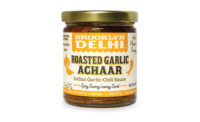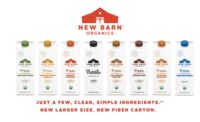Clean Label Shelf Life Preservation Strategies and Ingredient Options
Interview with Zal Taleyarkhan, Director of Innovation & Corporate Research Chef, Charlie Baggs Culinary Innovations

Image of Zal Taleyarkhan courtesy of Charlie Baggs Culinary Innovations
Sometimes perfection is not quite all it’s cracked up to be. This June, The Wall Street Journal’s Exchange section feature, “The Problem with the Perfect Loaf of Bread,” chronicled commercial bread’s evolution and corresponding ingredient—all to keep packaged products “fresher” for longer on shelf.
However, today’s more health-conscious consumers are scrutinizing product labels turning away from long ingredient lists and ultimately those products they perceive as overly or ultra-processed.
In this podcast, Prepared Foods discusses clean label shelf life preservation strategies and ingredient options with Zal Taleyarkhan, Director of Innovation and Corporate Research Chef at Charlie Baggs Culinary Innovations (CBCI), Chicago.
Listen Now!
A Prepared Foods interview with Zal Taleyarkhan, Director of Innovation & Corporate Research Chef at Charlie Baggs Culinary Innovations, Chicago. Brought to you by Kalsec.
Listen to more episodes from The Prepared Foods Podcast.
Taleyarkhan agrees that cleaner, smaller ingredient labels are a prime discussion point in all CBCI client conversations—whether it’s an emerging company with a new product or a larger processor looking to reformulate. In every case, the goal is balancing ingredient use and cost with preserving the best culinary qualities (taste, texture, color) and food safety attributes (mold inhibition)—all while a product travels through the supply chain to store shelf.
Using beverages as an example, Taleyarkhan credits Harmless Harvest Inc. for actively educating its consumers about the impacts of natural ingredients in its organic coconut water. The company proactively notes that—because it doesn’t employ certain ingredients—its water may take on a slight pink color and flavor change (while still safe) after so many months.
Taleyarkhan also shares a few examples of helping clients develop cleaner, more simplistic labels by …
… using lecithins and/or enzymes instead of traditional emulsifiers or conditioners in bakery applications;
… using rosemary extract as a natural antioxidant in snacks;
… using vinegar and citric extracts to replace certain synthetic ingredients in sauces; and
… using beet juice extracts to replace certain ingredients in barbeque sauce.
Looking ahead, Taleyarkhan also is encouraged by new ingredients and process platforms (including plant-based, fermentation) to make clean label formulating even easier in the future. For example, he cites potential a new berry extract-based sorbate that not only is effective but also label friendly as the berry itself. More broadly he notes that a new clean label dressing could leverage the same matrix of ingredients used elsewhere to create a plant-based spreadable cream cheese.
Looking for a reprint of this article?
From high-res PDFs to custom plaques, order your copy today!






